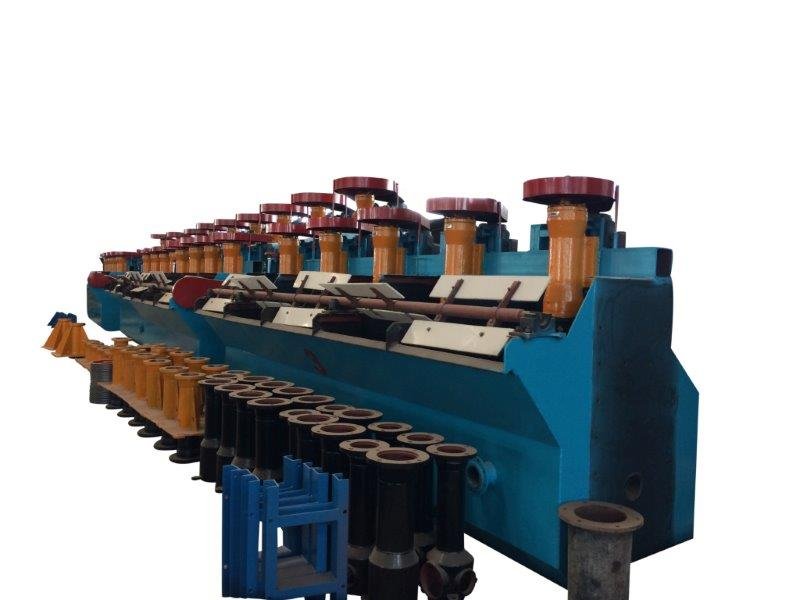Flotation Cells Design & Operating Characteristics

Qualitative Aspects In its essentials, a flotation cell must provide for two main functions. First, it must supply air adequate in quantity and quality for satisfactory process kinetics. Air quantity can be defined on the basis of the narrow range provided in major U. S. commercial cells, for escape velocity, which averages near 1.2 m/min […]
Cristobalite in Fire Clay Calcines
One goal of the Bureau of Mines is to conserve the Nation’s mineral resources by developing improved performance materials. Consistent with this goal, the Bureau conducted studies on the formation of undesirable cristobalite in seven different fire clays used as refractories. The studies employed scanning electron micrography, chemical and X-ray analyses, and pyrometric cone equivalent […]
Countercurrent Ion Exchange
Resin-In-Pulp The Federal American Contactor is currently being used by Federal American Partners, Union Carbide, and Western Nuclear. The system has a single stage per tank as in the Porter System. It is not a fluidized bed system but a system in which the resin is maintained in a slurry suspension by mechanical agitation. The […]
Miscellaneous Laboratory Equipment
Measuring Apparatus.—The chief forms of these are burettes, pipettes, graduated flasks, graduated cylinders and “graduates.” Burettes have already been described, and an automatic pipette was also mentioned, both in Chapter VII. For roughly measuring reagents, graduated cylinders are usually used. These may be obtained in sizes ranging from 5 cc. to several liters. A convenient form […]
Assay Furnaces
Assay furnaces are made to use three kinds of fuel—gaseous, liquid and solid. Those using gas are very little employed, usually only in city laboratories where but a few assays are made. They are, of course, very convenient when occasional assays are made, as in the laboratory of a consulting chemist, who is sometimes called […]
Sample Preparation Laboratory Equipment
The apparatus used to reduce samples of ore, rock, coal, minerals, etc. from the dimensions usually encountered as they are brought to the laboratory, to the fine powder necessary for the analysis, may be divided into two classes, (1) crushers and (2) pulverizers. The former are used simply to prepare the material for the latter. […]
Electrochemical Analysis Equipment
Electrolytic determinations are now part of the routine of many commercial laboratories and means for carrying out such work will usually be found in every well-equipped metallurgical laboratory, no matter how small it may be. In determining copper, nickel, bismuth, etc., the electrolytic methods are far more satisfactory than the precipitation or volumetric ones, hence […]
Laboratory Water Distillation Equipment
Automatic Stills For the preparation of distilled water in the laboratories, nothing are quite so handy as the automatic laboratory stills sold by various dealers in chemical supplies. One of the best forms of these is the Jewell automatic water still, another good form is the Rochlitz automatic water still, Fig. 47, made for The […]
Laboratory Heating Equipment
If the laboratory is so located that coal gas or natural gas is accessible, the problem of heating hot plates and making ignitions simply resolves itself into the use of gas stoves and burners of the simplest types, such as are familiar to every student of chemistry. When, however, the laboratory is located, as most […]
Burette Stand
Burette Stand A neat burette table is shown in Fig. 25. It is 32 inches high, 4 feet long, and 2½ feet wide. It has a shallow cupboard below and a narrow drawer. The bottom of the drawer extends only half way across the table, so that it does not interfere with the tubes leading […]
